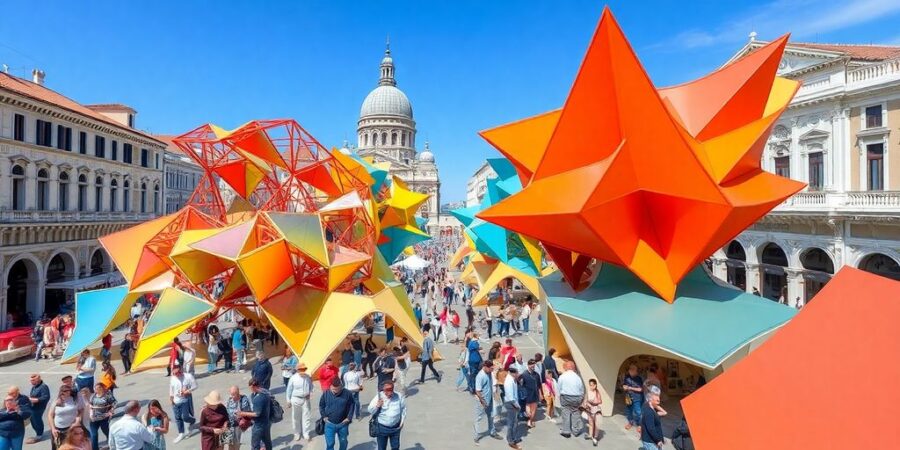The Venice Architecture Biennale 2025 returns as an emotional celebration of human ingenuity and environmental stewardship, inviting visitors to immerse themselves in groundbreaking installations and visionary dialogues that are poised to redefine the future of built form. Under the passionate guidance of curator Carlo Ratti, an MIT professor and pioneering thinker, the 19th International Architecture Exhibition unfolds across the Giardini, the Arsenale, and Forte Marghera from May 10 to November 23, 2025, exploring natural, artificial, and collective intelligences in design.
More than 65 national pavilions, including debut appearances by Azerbaijan, Oman, Qatar, and Togo, present biofabrication marvels, reparative colonial narratives, and living laboratories that prototype circular protocols for a resilient planet. Emerging talents can aspire to join the ranks through the Biennale College Architettura and rigorous open calls managed by national cultural bodies, while collateral events and the GENS Public Programme offer hands‑on workshops that amplify diverse voices and collective action.
History of the Venice Architecture Biennale
The Venice Architecture Biennale originated within the wider Venice Biennale framework, which was founded in 1895 as an international art exhibition to foster global cultural exchange. Architectural presentations began in 1968 with curated shows like Vittorio Gregotti’s “About the Mulino Stucky” before the Architecture section was institutionalized in 1980 under director Paolo Portoghesi, marking its formal debut at the Corderie dell’Arsenale.
Early editions reflected post‑modern debates, as seen in Portoghesi’s Strada Novissima installation, challenging orthodox modernist narratives and setting the Biennale on a path of critical discourse. Since 1980, the Architecture Biennale has been held biennially, shifting to odd years post‑2020 pandemic postponement, and has evolved into a vital platform for examining urban resilience, sustainability, and socio‑political themes through architectural lenses.

Theme and Curatorial Vision
Carlo Ratti’s curatorial manifesto for Biennale Architettura 2025, titled Intelligens. Natural. Artificial. Collective., seeks to unravel the intricate relationships among living systems, machine learning, and social networks in shaping tomorrow’s environments. Ratti, an architect‑engineer who leads MIT’s Senseable City Lab, envisions the exhibition itself as an experimental “choral effort” where contrasting voices and methodologies collide to spark new insights into adapting to an altered world.
The theme spotlights emergent fields, from cyanobacteria‑powered biofabrication to data‑driven land‑water systems, inviting contributions that question conventional boundaries between nature, technology, and community. By foregrounding collective intelligence, the Biennale aims to inspire architects to co‑create regenerative systems that honor cultural memory while pioneering circular design protocols.
Dates, Venues, and Exhibition Structure
The 19th International Architecture Exhibition runs from Saturday, May 10 to Sunday, November 23, 2025, with a pre‑opening on May 8 and 9 and an inauguration at Ca’ Giustinian. The main venues include the historic Giardini pavilions, home to permanent national venues, the sprawling Arsenale complex, and the reactivated Forte Marghera, which together transform Venice into an immersive architectural canvas. Over 750 global contributors participate in the central exhibition, while 11 curator‑admitted Collateral Events enrich the program with independent perspectives across non‑profit and institutional spaces. The GENS Public Programme supplements the exhibition with lectures, symposiums, and hands‑on workshops that delve into fiscal models, community co‑design, and ecological regeneration.
Featured Highlights and National Pavilions
Denmark’s pavilion unveils sustainable techniques in local timber construction, marrying vernacular know‑how with next‑generation materials. Canada presents a pioneering “live” biofabrication exhibit, harnessing cyanobacteria to reimagine adaptive building skins that breathe and self‑repair. Brazil’s showcase centers on Amazonian community architectures that uphold cultural heritage and ecological stewardship in fragile ecosystems.
The U.S. pavilion, “Porch – An Architecture of Generosity,” celebrates civic thresholds as vital loci of social cohesion and democratic dialogue. Britain’s “Geology of Britannic Repair” confronts colonial legacies through an evocative architectural narrative that employs the Great Rift Valley as both metaphor and medium for reparative futures. First‑time national participants Azerbaijan, Oman, Qatar, and Togo bring fresh cultural vistas and sustainable strategies to the global stage.
Innovation, Sustainability, and Circular Economy
A core ambition of Venice 2025 is to pioneer “living laboratories” where art, data science, and planetary studies converge to prototype circular economy workflows within architectural practice. Exhibition design itself follows an eco‑responsible blueprint, from modular, reusable display systems to low‑impact fabrication techniques, setting new benchmarks for green cultural events. Ratti’s circular economy manifesto challenges participants to quantify life‑cycle impacts, minimize waste, and optimize material resource loops through collaborative experimentation. Collateral events further interrogate themes like algorithmic governance, pluralistic land rights, and finance‑forward land‑water systems, expanding the conversation beyond architecture alone.

Collateral Events and GENS Public Programme
The 11 Collateral Events, selected directly by the curator, activate off‑site venues throughout Venice, amplifying alternative voices and interdisciplinary dialogues outside the main pavilions. Topics range from cultural restitution and decolonial frameworks to speculative futures in algorithmic urbanism, offering visitors a kaleidoscopic view of global architectural thought. The GENS Public Programme hosts an evolving suite of conferences and workshops, many featuring Ratti himself, that provide immersive learning experiences and real‑time engagement with research networks. Pre‑opening days include exclusive masterclasses on adaptive reuse, circular design sprints, and cross‑sector collaborations to foster peer‑to‑peer knowledge exchange.
How to Qualify to Present at the Biennale
Most national pavilions are organized by ministries of culture, arts councils, and civic foundations that issue open calls aligned with the Biennale’s thematic focus. For example, Finland’s Ministry of Education and Culture announced a two‑stage selection process for curators emphasizing inclusivity, sustainability, and social impact, with final proposals reviewed by a multidisciplinary jury. In the United States, the Bureau of Educational and Cultural Affairs invites architects, designers, and non‑profits to submit projects completed after 2000, prioritizing innovation and thematic alignment. Emerging practitioners can also apply to the competitive Biennale College Architettura programme, which provides mentorship, funding, and logistical support for site‑specific installations. Applicants should prepare detailed concept statements, sustainability plans, and evidence of community engagement to strengthen their proposals.
Tips for Aspiring Participants
Align your concept closely with the “Intelligens” theme by articulating clear connections to natural, artificial, or collective intelligence frameworks. Emphasize circular design strategies and life‑cycle transparency in your materials and fabrication approach. Partner with interdisciplinary teams, biologists, data scientists, community organizers, to enrich collective intelligence narratives and bolster project credibility. Review previous pavilion case studies to discern successful curatorial tactics, budgeting practices, and visitor engagement models. Submit polished visual documentation and clearly defined objectives to stand out in competitive selection panels.
The Venice Architecture Biennale 2025 stands as a beacon of emotional resonance and bold experimentation, fusing art, science, and civic imagination in service of a more equitable and resilient built environment. Whether you traverse the Giardini’s historic pavilions, engage with peers in circular design sprints, or dream of your own pavilion proposal, this edition offers an unparalleled platform to shape architecture’s role in confronting planetary challenges. Prepare to be inspired, provoked, and transformed by a six‑month odyssey of ideas that redefines what intelligence, and humanity, can achieve together.
Hashtags:
#VeniceArchitectureBiennale #Intelligens2025 #CarloRattiCurates #DesignForResilience #CircularArchitecture #GlobalPavilions #Biofabrication #ReparativeDesign #EmergingArchitects #ArchitectureInnovation









